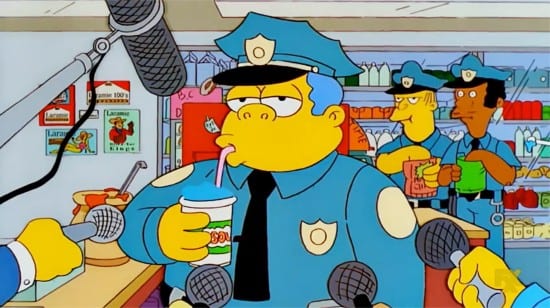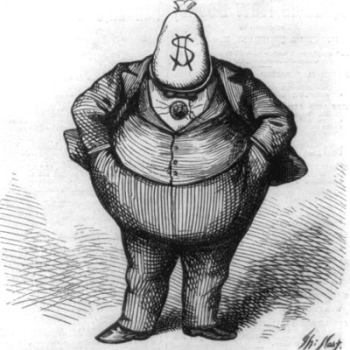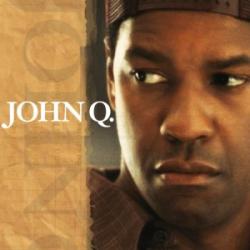My mom was a second-grade teacher for more than 30 years. She said she loved that job and that she loved everything about teaching children who were that age.
Well, almost everything. Everything except the knock-knock jokes.
Second grade is when kids start to tell knock-knock jokes. But it’s a little sooner than most kids fully understand knock-knock jokes. Their initial, fumbling, labored attempts to imitate the form of these jokes may occasionally produce some adorably cute Kids-Say-the-Darn’dest-Things type scenes, but mostly it’s just excruciating.

These are, after all, knock-knock jokes — groaningly bad puns with a bit of ritual scaffolding to set them up. Even a “good” knock-knock joke delivered well is still just a knock-knock joke. Sitting through multiple failed attempts to deliver a single knock-knock joke by a kid with a shaky grasp on the core pun or why it’s funny takes a lot of patience. My mom was a very patient woman, but enduring weeks of such attempts from every kid in her class, one after the other, required every ounce of patience she had.
What got her through this every year, I think, was that she was a teacher. She was all about helping children come to understand things they previously did not understand. So for her, this moment — when a child is struggling to understand something they almost-but-can’t-quite grasp — was also exciting and hopeful, even when it involved something as apparently trivial as knock-knock jokes.
The moment after that is the one Mom, like most teachers, lived for. That moment when a kid’s grasping about tightens on something solid. The “Aha” moment when you can see the lights turn on in their eyes. The joy and beauty of such little epiphanies is what keeps teachers going despite the long hours and dismal pay.
There are many such moments in a second-grade classroom, which was a big part of why Mom found her job rewarding. As students get older — as people get older — Aha moments and little epiphanies of understanding become more rare. Adults also sometimes get stuck in that awkward, pre-epiphany phase, settling in there like a second-grader who almost-but-not-quite understands the knock-knock joke they’re trying to recite. Those kids are vaguely aware that there’s something about this that’s meant to be delightful, some strange power available to those who can harness this thing they haven’t yet quite figured out. They want to claim that power for themselves, even before they’re able to perceive what it means or how it works.
I think that’s part of what we see in these recurring waves of “persecuted police” hoaxes. These are not a new phenomenon. It happens a lot here in America, usually in response to the periodic rise of public sentiment against scandalous displays of police brutality and lawlessly lethal violence by police.
Criticism of police killings and police violence always seems to be unsettling and bewildering for police departments. They don’t quite comprehend what they’re hearing and don’t know how to respond. They seem to dimly grasp that the criticism against them has some strange power — that they people they have harmed and wronged are wielding some kind of incomprehensible moral authority against them. But they’re not quite able to understand what that moral authority means or how it works.
So they try to imitate it, to mimic the form of this thing they recognize is somehow powerful but whose power they are not able to understand. They see the public rallying around and behind their victims so they imagine that claiming such victimhood for themselves will by some mysterious alchemy allow them to wield that same confusing moral authority. So they start telling stories asserting that they are the “real” victims.
These stories are not true, or even plausible. Nor are they even remotely proportional to the lethal, life-destroying true stories of the people they are being criticized for beating, killing, framing, and unjustly ruining the lives of. This is part of what they don’t grasp — that the truth and the actual substance of those stories matters. All they seem to perceive, rather, is that there’s something inscrutably magical about the status of victimhood and they’re desperate to claim that status for themselves.
The attempts are laughable. Laughable as in ridiculous and deserving of mockery, not laughable as in Cops Say the Darn’dest Things, how cute.
Most of these stories are lazy adaptations of various decades-old urban legends about food. Some don’t even rise to that level. “A barista wrote ‘pig’ on my coffee cup,” said one police officer, who later admitted he wrote it himself. “The drive-through worker took a bite out of my sandwich!” cried another policeman, who later admitted that he’d taken the bite in question. Another officer weirdly chose to record and post a video of herself sobbing uncontrollably because her Egg McMuffin had taken longer to prepare than she’d have preferred, and doesn’t that make her just as much a victim as someone like George Floyd? (Libby Watson at The New Republic and Sarah Jones at New York magazine both offer good discussions of these and other recent false claims of police victimhood, almost all weirdly involving fast food.)
The most audaciously dishonest recent story involved a couple of NYPD officers who ordered milkshakes at a Manhattan Shake Shack. They took a sip and thought the shakes tasted funny, so the Shake Shack guy apologized and gave them coupons making their next order on the house. The milkshake machine had just been cleaned, he explained, and sometimes the first few shakes after that can taste a little soapy.
That would have been the end of the story, but the NYPD brass decided to whip up a shake of their own by somehow turning this into a violent attack on their officers, and on all police officers everywhere. “Tonight, three of our brothers in blue were intentionally poisoned by one or more workers at the Shake Shack at 200 Broadway in Manhattan.”
That’s an actual quote from an actual press release from New York’s Detective Endowment’s Association. It’s a complete fabrication — a knowing lie, told in full knowledge that it was a lie. A Bronx lieutenant sent out an email to the city’s police unions, repeating and embellishing that lie in full knowledge that this is what he was doing. He doubled the number of officers involved, claiming that six cops “started throwing up after drinking beverages they got from shake shack on 200 Broadway.” No, they didn’t. They didn’t drink the beverages and they didn’t throw up or get sick at all.
Those three officers were apparently happy with their coupons, but their bosses set to work filing false reports and soon were sending detectives and forensic investigators to drape the Shake Shack in crime-scene tape and otherwise do everything they could to steal the mysterious, magical authority their actual victims were then wielding against them by pretending, instead, that they were the “real” victims, the thin blue line protecting you and your family from a nefarious conspiracy of milk-shake-poisoning anarchists.
They got more than a little carried away with the whole preposterous claim. It was a poorly conceived and poorly conveyed lie that they wasted enormous amounts of time and taxpayers’ money promoting.
But it was also, I think, something like watching a confused child hazily trying to imitate the magic of a knock-knock joke, the meaning and substance and structure of which they are not yet able to understand. The leaders of the NYPD have vaguely absorbed that it’s somehow wrong that someone might be subjected to random hostility, suspicion, and violence. They’ve nearly glimpsed that something or other they can’t quite grasp cries out against the unfairness of that. But what that all means and the implications of it still elude them.
Perhaps some day they’ll have their own “Aha” moment and figure it out.
Anyway, one reassuring take-away from all of this is that, yes, fast-food workers do periodically clean out the milk-shake machine. I think we can all agree that’s good to know.












